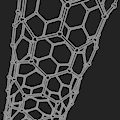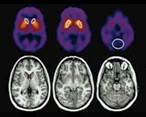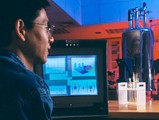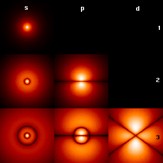
| A place for fun, learning, and exploration in the world of electricity and its technologies |
|
Quantum Mechanics
|
Physics Lab |
General Relativity |
|
Laboratories at the
forefront
Fermilab |
Stretch your mind Learn about: Quantum Entanglement Supersymmetry String Theory Parallel Universes Hidden Dimensions |
Topics of interest
Fusion Energy |
(requires Adobe Reader - see our Downloads page)
Fusion Energy  |
No more greenhouse emissions? Virtually unlimited fuel supply? This is the potential promise of fusion energy - the energy of the sun. This energy is produced by fusing together hydrogen nuclei, releasing tremendous amounts of heat which could drive a turbine and generate electricity. The problem: How to ignite and contain a plasma that can exceed 100 million degrees C. The image to the left represents a magnetic confinement vessel - currently the most likely method. |
DOE - Fusion Energy Program National Ignition Facility Fusion Power.org Princeton Plasma Physics Lab Plasma Science & Technology General Atomics - Fusion Education |
Nanotechnology  |
This object may look like a Tinkertoy assembly but its a heck of a lot smaller. Instead of using wooden pieces it uses individual molecules to create structures never before imagined. There are certainly risks, and experiments should be proceeded with caution and foresight, but there are also tremendous potential benefits in the areas of medical science, water filtration, energy efficiency, fuel cells, computing, and much more. |
National
Nanotechnology Initiative Nanotechweb.org Scientific American (nanotech) Nanotech Foresight Institute Nanotechnology Now Nanoweek.com Institute of Nanotechnology |
Nuclear Medicine  |
When the question is asked; "How does this benefit mankind?", Nuclear Medicine probably has the best answer to offer. Being able to look inside the human body, and treat disease, without the pain and infection risk of incision has proven to be an invaluable tool for doctors, and life-saving for patients. The current science is probably still in it's infancy relative to what is possible, and future advances should be looked forward to with much hope. |
Society
of Nuclear Medicine Department of Nuclear Medicine at the University of Buffalo Journal of Nuclear Medicine History of Nuclear Medicine at Berkley Atomic Museum |
Ion Propulsion  |
For every action there is an equal and opposite reaction. When Newton came up with his 3rd law of motion many did not understand. When it was suggested that this could work in the vacuum of space they thought it was crazy! That was before we flew men to the moon and robot explorers to other planets. Ion propulsion will take us even further. |
Science @ NASA FAQ about Ion Propulsion Space.com TheSpaceSite.com NewScientist.com Sky & Telescope |
Quantum Computing
 |
Current computing technology relies on classical physics to manipulate binary information using electrons and semi-conducting materials. We think of this technology as vary fast and highly miniaturized relative to what we had in the past. Quantum computing, when developed, will yield exponential gains over what we're using today by utilizing the phenomena of quantum mechanics. Quantum computers may be able to do in seconds what would take today's computers years! |
IBM Almaden Research Center Qubit.org Institute for Quantum Computing Caltech - tutorial quantum computation and cryptography Birth of a new science |
Photonics & Lasers
 |
Turn on a flashlight and you send out a beam of photons. Look at an object and what you actually see are the photons that have bounced off of it into your eyes. They're also messengers coming to earth to show us what the universe looked like billions of years ago. They can pass through glass, cut through steel, and carry data and the human voice through fiber optic cables. The science of photonics spans both the known and theoretical worlds of physics. |
Optics.org Institute for Lasers & Photonics at the University of Buffalo Photonics.com LaserFocusWorld.com |
Home | About Us | Advertise | Submit an Article | Submit a Link | Contact Us
Copyright © electricalfun.com - All rights reserved


